January 20-22, 2009
Lots of people warned us about Cairo, saying that it’s dirty and noisy, that people are rude, and so on. We braced for the worst. But when we arrived we found a surprisingly nice metropolitan city. The architecture is really beautiful, similar to some of the older ornate buildings in, say, Chicago. There are trendy shops everywhere, and well-dressed people run about their business. Maybe Cairo seemed OK because we just came from Ethiopia, which was so far the most difficult place to travel. Not sure. One thing we will say is that drivers in Cairo are really nuts. When we first arrived we wondered if we would ever be able to cross the road.
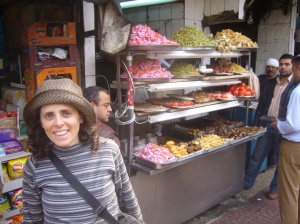
Yeah! Falafel stand! But then we learned that Egyptian falafels don't hold a candle to Israeli ones. You get a small pita and only one actual falafel, plus they are only available for breakfast!
Cairo Museum
On our first day in Cairo we set off to check out the Cairo Museum.
In the museum’s gift shop we picked up a little coffee table book to teach us about Egyptian history. Here’s what we learned:
- The Nile River is responsible for the development of the earliest communities in Egypt. Those people learned to deal with the cycle of droughts and floods. They stocked food for the bad times, and traded their surpluses. The good supply of food meant that they had time to specialize in various professions.
- Two kingdoms developed in Egypt, one in the north and one in the south. The southern kingdom was called “upper Egypt” because it’s at the source of the nile, and conversely the northern kingdom was called “lower Egypt”. Yup, very confusing.
- These two kingdoms were first united by king Menes around 3200 BC. This marked the start of history as the Egyptians see it. A chain of pharoes ruled Egypt for more than 3000 years. Egypt had some natural barriers to protect it from outside invaders: desert to the west, the Mediteranean to the north, and the Red Sea to the east.
- In 300 BC, Alexander the Great conquered Egypt. He set up the city of Alexandria where the famous ancient library was established.
- Since Alexander, Egypt was ruled by various foreign powers: Romans, Byzantines, Islamic powers (including the Ottomans), the French under Napoleon in 1798. The French were ousted, and soon Muhammad Ali was able to set up a dynasty that lasted the next 100+ years.
- Around WWI Egypt was a British protectorate. By 1922 a national movement succeeded in getting independence and Egypt as we know it today was born.
The museum itself is really huge. I overheard one tour guide saying that if you spent one minute on each item in the museum you would need 99 days to see everything. So, you need to choose. Pnina and I spent some time downstairs looking at various artifacts, and then we headed upstairs to see the huge space that contains the treasures from Tutenkhamen’s tomb.

One of the halls inside the huge museum. Photos are not allowed but I managed to get this one. Pnina was not so lucky - a guard made her erase the few photos she took.
Tutenkhamen was not a particularly important pharaoh. What makes him well known is that his tomb is one of the few that wasn’t pillaged. Even still, the amount of stuff taken out of his tomb to the museum is big enough to warrant its own museum – so many chests, dolls, pieces of jewelry, fans, furniture, boats…he was a real pack rat 🙂 Tutenkhamen’s mummy was wrapped in cloth, placed in a golden casket which itself was placed in a 2nd and 3rd casket, and those were placed in a golden wooden box which itself was placed in a series of other boxes. It reminds us of those Russian dolls. And the artistry of all these items is really unbelievable, so much better than the art we just saw in the churches in Ethiopia, and these items were made thousands of years earlier.
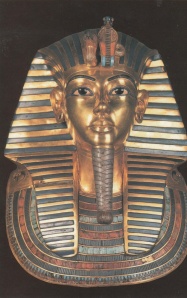
Tutenkhamen's mask. Putting the pharao's face on the mask helps the spirit locate the body in the afterlife.
Pyramids at Giza
The next day we set off to see the pyramids. They’re located in the town of Giza, not far from Cairo. We took the subway most of the way, and then hopped a bus. The subway was really well set up and convenient. The only issue is that we accidentally boarded a women-only compartment. A second after we boarded we realized what happened, but when I turned around to exit the coach, the doors closed in my face. I was trapped. I was trying to be as inconspicuous as possible, but it was difficult because Pnina thought the whole thing was hilarious and she has a big laugh. 🙂
On our bus we met a local guy, Hani. He invited us to his place to have some tea and see the view from his rooftop, which he said was the best view in Giza. He wasn’t kidding…
Hani definitely showed us Bedouin hospitality. But here’s the thing – we’re still not sure if he was truly looking to help us or mostly trying to get kickbacks by referring us to vendors. This feeling of having probably been ripped off still bothers us (mostly me) and taints our whole pyramid experience.
Hani explained that normally tourists take the main entrance and get hassled to no end, forced to pay extra fees at every step of the way. On the other hand, Egyptian families hire a horse or camel for a tour around the pyramid complex (which is pretty large – about 15 sq km). This gives them better views and helps them avoid the hassles at the main entrance. He convinced us to go with the Egyptian way, and he lead us to a place where we could go about arranging such a tour. When we met the guide, he had us jump on the animals first (camel for me, horse for Pnina), and only after walking a short distance he started negotiating the price. He started at 920 Egyptian Pounds ($184), including animals, guide, and tickets. We bumped it down just slightly to 800 EP, and we went with it. This is quite a bit of money for Egypt, so I’m fairly convinced we were ripped off royally.
Anyhow, we took the side entrance to the pyramid complex. The idea was to reach a point where all 3 big pyramids and the few smaller pyramids line up for that perfect postcard shot:
But we didn’t make it quite that far. It seems our guide took a shortcut, and we failed to argue our case. Grrr. It was still a nice walk, though perhaps a bit rough: neither animal had a comfortable saddle, and Camel rides can make you sea-sick.
There are three large pyramids here in Giza. The first one was built by king Khufu (aka Cheops) around 2500 BC, as a tomb. This is the largest of the three pyramids. His successor Khafre also built a pyramid for himself. It’s not quite as large but it looks a bit bigger because it’s located on an elevated area. The next successor, Menkaure, also built a pyramid for himself, which is yet smaller. Besides these three large pyramids there are also a number of smaller pyramids built for spouses/relatives, and there are also various underground tombs.
We started by approaching the middle pyramid, Khafre. At the top of this pyramid you can see some of the original stones that gave the pyramid a smooth white outer surface. The rest of the stones were removed Ramses II to build a temple in Heliopolis. At the base of the pyramid you can see some of the stones that made the flat platform area around the pyramid. The guide lead us to a corner of this pyramid where it’s OK to climb up a few steps.
From there we continued to Khufu’s pyramid, the oldest and largest, the one located at the main entrance to the pyramid complex.
At the base of this pyramid there’s a small museum that houses a wooden boat. Egyptians believed that the afterlife looks like a sea, so naturally a pharaoh needs to have a boat buried with him to be used in the next world. This boat was discovered in 1954. It had its own tomb and it was buried in pieces, so it was a big jig-saw puzzle to put it back together.
While we were looking at the boat our guide, Mohammad, hung back with the animals some distance from the pyramid. We asked for 15 minutes to see the boat but it took a bit longer, and when we met him he was pretty irate. We decided that it’s best for us to just part ways with Mohammad and the animals so we sent him on his way. Freedom! We felt so much better to wander around on our own, though we did get offers for camel rides from other people roughly every 5 minutes. 🙂

Entrance to the big pyramid's tomb. It took an extra fee and we heard there wasn't much to see, so we skipped it.
Downhill from the big pyramid is the sphinx – a huge statue of a lion’s body with the pharao’s head. For many years the body of the sphinx was hidden under sand, and it was only in the early 1900’s that they removed the sand to reveal the body.
After we finished taking these silly photos we sat around and watched other people get silly while we munched on some barley nuts we picked up in Ethiopia. One of the families standing next to us took an interest in our strange food and the lady asked us what it’s called. “Barley” we said, and we gave them a few to try. That broke the ice so we introduced ourselves as “Jeff” and “Nina” from America. She said that they are from Lybia and welcomed us to the arab world. Life sure is funny! 🙂 If she knew where we are really from she probably wouldn’t have welcomed us just so.
After visiting the pyramid complex we met up with Hani once again. We went to his place and his mother served us dinner. After that we headed to another building owned by Hani’s uncle and located right next to the pyramid complex. The idea was to see the nightly pyramid sound-and-light show from the rooftop for free. Before heading upstairs we stepped into the perfume shop at the ground level and Pnina picked up a 100 mL bottle of perfume oil (not watered down) for 200 EP. Again, $35 is not a bad price in US terms, but we’re pretty sure we overpaid by a lot. Anyhow, the sound-and-light show turned out to be a dud. It was hard to hear the voice over with all the traffic noise, and what we did hear was not super exciting. We ended up leaving early.
Old Cairo
Christianity was introduced to Egypt very early. Today, about 10% of Egyptians are christian. There’s a neighborhood in the south of Cairo called “Old Cairo” where you can find some of the oldest churches. The style of christianity practiced here is called “Coptic”, which is also the name of the language that was used for years in these churches (before it was replaced by Arabic). On our last day in Cairo we set out to see this part of town. We were joined by Adriana, a Brazilian gal we met at our hostel.

Entrance to the "Hanging Church" in Old Cairo. It's called so because the church is built over a canal. There are some glass panels in the floor of the church where you can look down.

Later in the day we tried to hussle to see a different part of town, Islamic Cairo, but it was a little late and most of the mosques were closed.
Around the World
The night we returned from the Cairo Museum we tried to find a place with a big TV where we could watch Obama’s inauguration with other people. If this was America we would find a bar, but in Egypt bars are not common because it’s a Muslim and Islam disallows alcohol. You do see sheesha (hookah) shops everywhere, but they’re mostly set up for old men to sit around, puff and chat, and play backgammon. So we ended up watching the ceremony on the small TV in our hotel.
Still, it was pretty exciting. Obama’s speech was great – it had something for everyone. People were speculating about what would be the big one-liner from the speech, and I’m still not sure what it was. But I liked what he said about terrorism (“you cannot outlast us”) and the message he sent to some authoritarian countries (“we’ll reach out our hand if you relax your fist”). It was amusing to watch the classical music performance where a John Williams composition was played by Yo Yo Ma, Itshak Pearlman, plus a token black guy and a token woman (sorry – that’s how I see it).
When Obama took his oath of office, there was some kind of hiccup. It seemed at first like Obama couldn’t remember the lines Justice Roberts just fed him, but later it turned out that Roberts himself screwed up the lines. In the news we later saw photos showing Roberts and Obama repeating the oath the next day at the White House. So silly. It was interesting to learn that the oath doesn’t mean much because, according to law, Obama officially became president at exactly noon on inauguration day.
Another thing that happened exactly at noon – a new version of the white house website was released: www.WhiteHouse.gov. It includes a blog that tells you what’s going on in the white house. I added it to my blog roll in Google Reader and we’ve been following it since.
Later I heard about Obama celebrations that took place around the world, including the parties in the Capital Hill neighborhood in Seattle. It would have been awesome to be there!

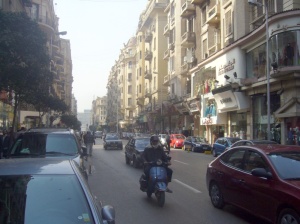


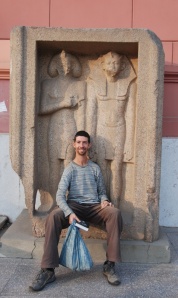




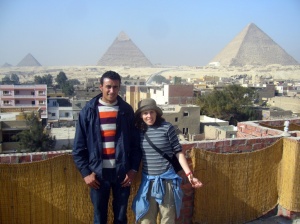








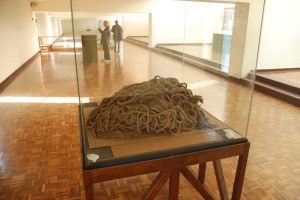
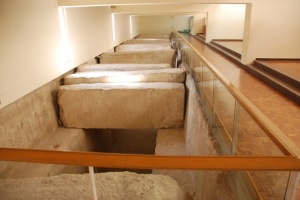
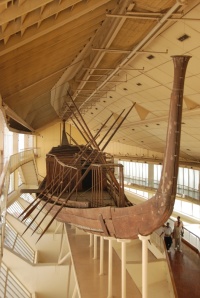






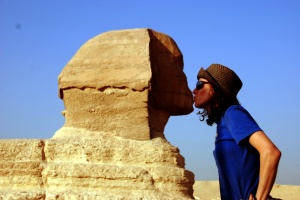














Thank you, as always, Shahaf, for sharing! Quick question – I’ve heard from some people that the pyramids and the sphinx are actually underwhelming and disappointing. What is your thought? Are Cairo and Giza must-see destinations?
Your experience at the pyramids seemed similar to ours. It’s hard to navigate the camel tours, perfume shops, etc, etc. Sounds like you the right choice by ditching your “guide.” We never did, and in the end never got that close to the Sphinx. I know how that hassle ends up tainting the experience overall. Did you end up getting to go into the pyramids?
Jen – I would say if you’re in Egypt, you may as well go and see the pyramids. Just go on your own and be prepared to keep saying “no” to all the “camel?” requests. Was it underwhelming? Yeah, a little bit. It kind of felt like we were walking through a post card. By comparison we were far more impressed with some of the ruins down south near Aswan. But anyhow, it’s still good to visit the pyramids just to see what the fuss is about.
Tyler – no, we didn’t end up entering the pyramids. We heard there wasn’t much to see in there, and after all the money we splurged on the ride we didn’t feel like spending the extra money to enter the pyramids. Did you and Sarah enter the pyramids? Was it worth it?
I went into a pyramid, but at the last minute Sarah got cold feet because it looked really cramped.
…Actually, it was *really* cramped and hot inside them. A lot of narrow passages that you can’t even stand upright in, and where you are crammed in with other tourists.
That said, I thought it was worth it, if only to say “I’ve been in one of the pyramids.” But, there isn’t much there beyond that, and definitely not for the claustrophobic.